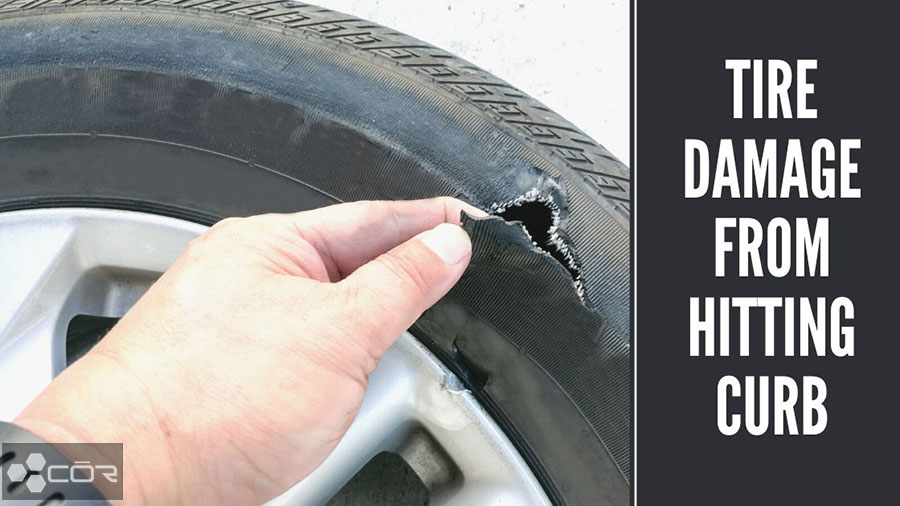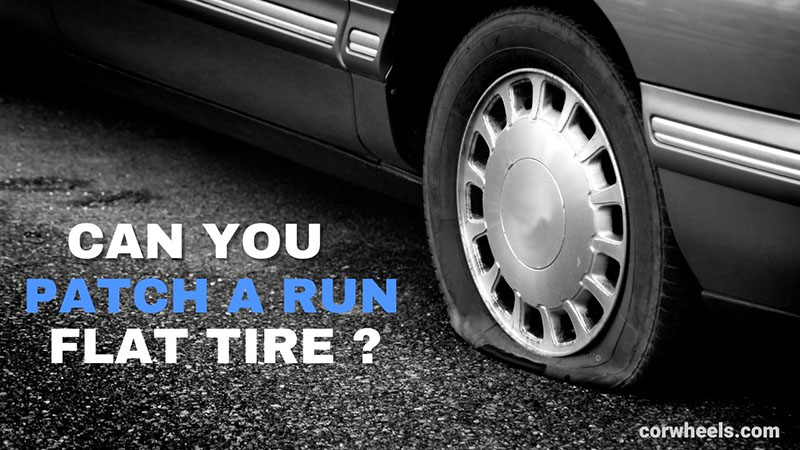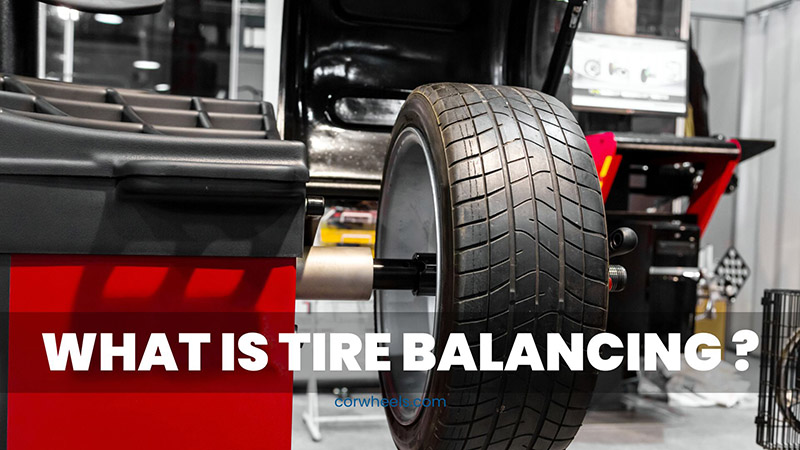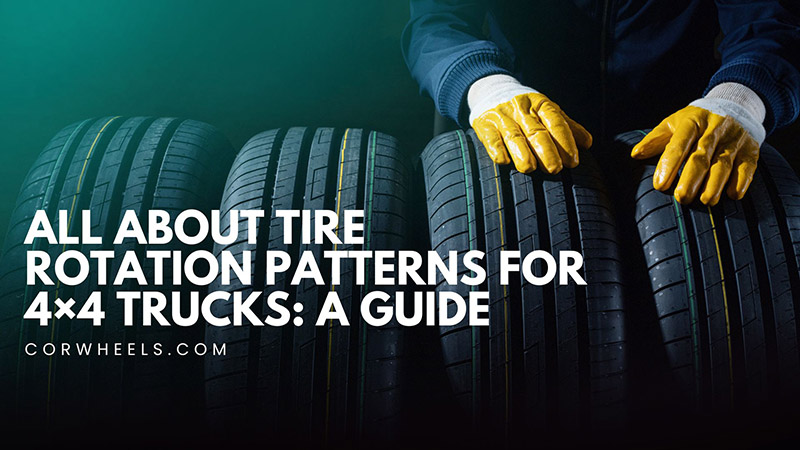It is time to replace your tires if they are already begging to go or are otherwise indicating that they could completely fail at any moment. How long does it take to change tires? Let’s discover the answer in this post!
In this article:
Signs You Should Change The Tires
Regardless of how you drive, road conditions, or how often you use your automobile, tires are designed to wear out over time, necessitating replacement. Here are some of the indicators that tell you it’s changing time.
- Visible Damages: After a while of use, some damages will appear, such as cracked sidewalls, bulges, worn-out treads, etc. A tire blowout could result from this, which is risky if you’re driving.
- Car Vibration: Your wheels may be out of balance or alignment if your automobile shakes when you are traveling at highway speeds. A professional can resolve these issues, but you most likely won’t need new tires.
- Illuminate Indicator Lights: Most modern cars have an indicator dashboard that informs the driver if something is wrong. Suppose you notice the tread wear or pressure light come on; you should check the tires.
How Long Does A Tire Replacement Take?
Typically, it takes 15 minutes to replace a tire and about 1 hour for 4 tires. However, the average time may change depending on each situation and the one performing the task.
Changing the Time Of A Professional Mechanic
A routine tire change would take an experienced mechanic about 10 minutes. It follows that it will take them 40 minutes to prepare all four tires for use. However, a few things can make the process take longer, like a busy service day, which can take up to a couple of hours.
Changing Time At Auto Care Centers
The replacement process at most auto repair shops or centers will take a minimum of 45 minutes and a maximum of two hours. Notice that to avoid waiting in line, you should make an appointment before going.
Changing Time Of Roadside Assistance
If you call roadside assistance for help changing the current tires, be ready to wait at least 50 minutes before they arrive. The time frame, though, may differ slightly depending on the system you’re phoning from and the assistance program you utilize.
In addition to the waiting time, changing your car’s tires with roadside assistance takes roughly 10 minutes per tire.
Changing Time On Your Own
It depends on you and your experience. It would take about 15-30 minutes to replace a tire if you are a little handy and have every necessary tool. Still, if it is your first time trying, it can take 45 minutes or even longer to change each tire.
For more:
Factors Affect Wheel Replacing Time
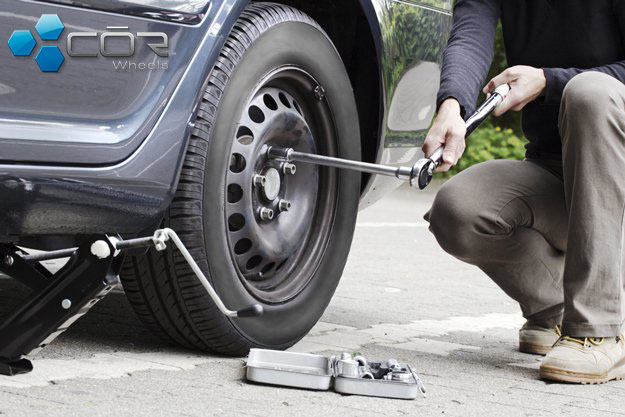
Every tire-changing experience is different, and the outcomes vary. Nevertheless, besides attaching them to the changer machine, how long it takes to replace a tire also depends on the intermediate steps.
- Tire Size: Compact automobiles and sedans have fewer lug nuts to be removed than larger vehicles like pickup trucks and SUVs, not to mention that the body weight of each tire might lengthen the cycle time.
- Tire Condition: A common problem with tires that have gathered a lot of mud and dirt is jammed lug nuts. Before fitting new tires, experts could make a few minor adjustments to the wheels to guarantee a perfect fit.
- Mechanic’s Experience: A mechanic with high-level expertise will do the job faster than one at entry-level.
- Number Of Tires: Although we suggest replacing all four at once to maintain the quality, you can still change only two fronts or two rears to save some money. Besides, when you have a flat tire and need to replace it with a spare, changing one tire is usually the best option, which takes only 10-20 minutes.
How To Change A Tire By Yourself
Suppose you are confused and never did this on your own; our guide below will help you out.
Step 1: Park your vehicle on a flat, secure surface.
You wouldn’t want your car to start rolling when changing the tires. Whenever possible, stop on an off-shoulder ramp if there is nearby traffic. Also, remember to activate your hazard lights.
Step 2: Put your car in park and apply the brake.
Apply your parking brake. To ensure the car won’t move, place heavy items or wheel wedges over both the front and back wheels.
Step 3: Pry off your cover of the wheel.
Remove the cover with a screwdriver. Place the tool’s point where the cover’s edge meets the wheel and exert some leverage. You will need to pry this off in a few spots in the same way you open a paint can.
Step 4: Loosen the lug nuts but leave them in place.
It would be best to do this after removing the hubcap from the wheel. If your built-in lug wrench has a hubcap remover on the end, wrap it in a piece of cloth, put it on the hubcap’s edge, and peel it off. The lug nuts are then accessible; use the lug wrench to loosen them by rotating them counterclockwise.
Step 5: Raise the car using a car jack.
You might need to crank or pump the jack, depending on your vehicle model. Lower the car, move the jack into a better position, then lift it once again if the jack can’t stand straight or the vehicle appears unsteady. Notice that the car only needs to rise slightly above the ground, so you have room to change your old tire.
Step 6: Take the tire off.
Place the remaining lug nuts that have been removed in a safe place. After that, remove the tire. Suppose the jack fails; you can place the tire underneath the car.
Step 7: Mount your new tire.
Put the spare or new tire on after lining up the rim with the wheel bolts. Then, manually secure the lug nuts to the wheel. Once they are snug, use your lug wrench to tighten them, but not completely.
Step 8: Tighten your lug nuts.
Completely tighten the nuts after lowering the automobile without placing any weight on the wheel. This way, you will be safe while the wheel is secured. Lower your car back to the ground, and you are done!
Tips To Lessen Your Tire-Changing Time
Every vehicle owner should be familiar with the method of replacing tires. It can save you from unexpected troubles when on the freeway. Here are some extra tips that can make the changing process easier and take less time.
- Use your TPMS: The Tire Pressure Monitoring System (TPMS) can help you identify the issue faster.
- Disassemble each component of the car: This allows you to check for any faulty or dangerous parts that might activate the indicator light instead of the car, making it easier to spot the problem and shortening the time between tire replacements.
- Cleaning the mating surface on the wheels and their hubs to facilitate your replacing process.
Frequently Asked Questions
How Frequently Should Tires Be Changed?
The NHTSA (National Highway Traffic Safety Administration) advises car owners to get their tires changed every six to ten years. Yet, there are several things that might exacerbate tire wear and tear, necessitating more regular tire replacement for drivers. Check for the evident signs we mentioned above.
Should I Replace All Four Tires At Once?
100% yes.
Even though not all tires wear out at the same rate because of weight distribution, routine rotation, and other factors, it is ideal to replace all four tires at once. However, if your remaining tires are relatively new, you can change just one tire.
Is Tire Replacing Expensive?
It depends on your type of vehicle; larger cars that sustain heavier loads require more durable tires.
Based on the manufacturer and quality, replacing a single tire might cost anywhere between 50 and 200 dollars. Large cars like SUVs and others might cost as much as 350 dollars.
The Bottom Line
How long does a tire replacement take? The accurate time for tire changes varies depending on different factors. Still, generally, a standard tire replacement takes a minimum of 10 minutes, and the entire procedure can be completed in under an hour.
You might also like these articles:



